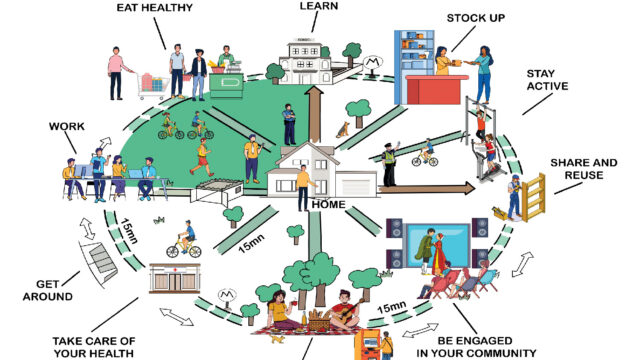Driving Us to 15 Minute Cities

It is no longer possible to find a new car for less than $20,000. Soon it will probably be difficult to find one under $30,000 – thanks to the 25 percent tax that will be folded into the cost of just about every car (and crossover) with a price around $25,000.
Not to mention most trucks, too.
Because almost all of those are not made in the United States, either – and they will all be hit with the 25 percent tax Trump likes to call a “tariff,” so as to try to get people to not think they’re paying it.
And how much will they be paying for this tax? Bloomberg estimates the per car cost – for cars not made in the United States – will be in the vicinity of $5,855. This would raise the base price of a car such as the 2025 Kia K4 (which I recently test drove and wrote about here, if interested) from $21,990 to $27,845 – putting this for-the-moment affordable Korean-made car into the unaffordable range. It is one of many – the Hyundai Elantra is another – that will be so rendered via the tax the president insists on calling a “tariff” – for the same essential reason that the government insists on calling the 15 percent lopped off every dollar we earn a “contribution” to Social(ist) (in)Security.
“It’s going to be a real struggle for buyers,” said Erin Keating, executive analyst at Cox Automotive. “We only expect prices to rise and incentives will go away. Some vehicles could go away.”
More finely, they will “go away” because not enough people will be able to afford to buy them.
Like eggs – on a grander scale.
The very popular Mazda3 – made in Mexico and Japan – is another not-made-in-the-USA model that will shortly become much less affordable. Right now, its base price is $23,950. Add $8,550 to that and it will cost $32,500. The $26,900-to-start Hyundai Sonata – currently the second-most affordable mid-sized family car available for sale in this country (Chevy’s Malibu has been cancelled) could soon cost $35,450 to start because it is made in Korea.
That is the kind of money people looking to buy (and who could afford to buy) an entry luxury car used to anticipate having to spend. And – just so you know – luxury-brand cars such as those sold by Lexus and Audi and Mercedes and BMW that are not made in the United States will also go up in price, too – such that even people who used to be able to afford one of those may no longer be able to.
$5,855 may not sound like all that much if you’re flush enough to be able to afford a luxury car at current prices. But there will be additional costs not mentioned in news coverage of Trump’s plan to increase the cost of vehicles – luxury and otherwise – by 25 percent in order to (somehow) make America great again.
One of these costs will come in the mail very soon – and it will be paid for by all of us. Including those of us who haven’t bought a new car, luxury or otherwise. It will be the increased cost everyone who drives a car (or truck or crossover or SUV) is forced to pay for insurance, irrespective of where the vehicle they already own is made. For exactly the same reason the cost of the coverage everyone who owns a vehicle is forced to pay has already increased by 25 percent, on average. Courtesy of the infusion of EeeeeeeVeeeees that – typically- cost $50,000 or more each. It does not matter that you did not buy an EeeeeeeeVeeee,
You (and I) get to pay for the anticipated replacement costs of other people’s vehicles, in the event they are totaled in an accident.
If a new Kia K4 or Mazda3 or any of the other vehicles not made in the USA will shortly cost $5,855 more to replace then it will cost you and I and everyone else that sum plus whatever markup the insurance mafia decides to impose. Because we can’t decide to refuse the mafia’s offer – not without deciding to turn in our vehicle’s plates and cancel the registration and take the bus.
It being illegal to drive (and in some states, even to park) an “uninsured” car on the government’s roads. Never mind the etymological mind-game about those roads being public roads – let alone public right-of-ways. It is a government-enforced conditional privilege to drive upon them – and one of those conditions is that you must maintain “coverage,” whether you can afford it or not.
If most people can no longer afford to buy a new vehicle – or insure the vehicle they have, in order to be legally allowed to drive it – then most people will no longer be able to afford to live more than walking (or pedaling) distance from where they work or where they need to go in order to shop for food and so on. They will thus be herded into what the president has himself referred to as “Freedom Cities” – which has the same mouth feel as taxes styled “tariffs.”
The more honest term for “Freedom Cities” is 15 Minute Cities, i.e., open air prisons where you’re nominally “free” to move around as you like but only so far as you’re physically able. And that could be the intent behind all of this – even if it is not intentional.
And even if it is isn’t it will end up being the same result. So does it make any difference?
Kind of like the difference between a “tariff” and a tax.
